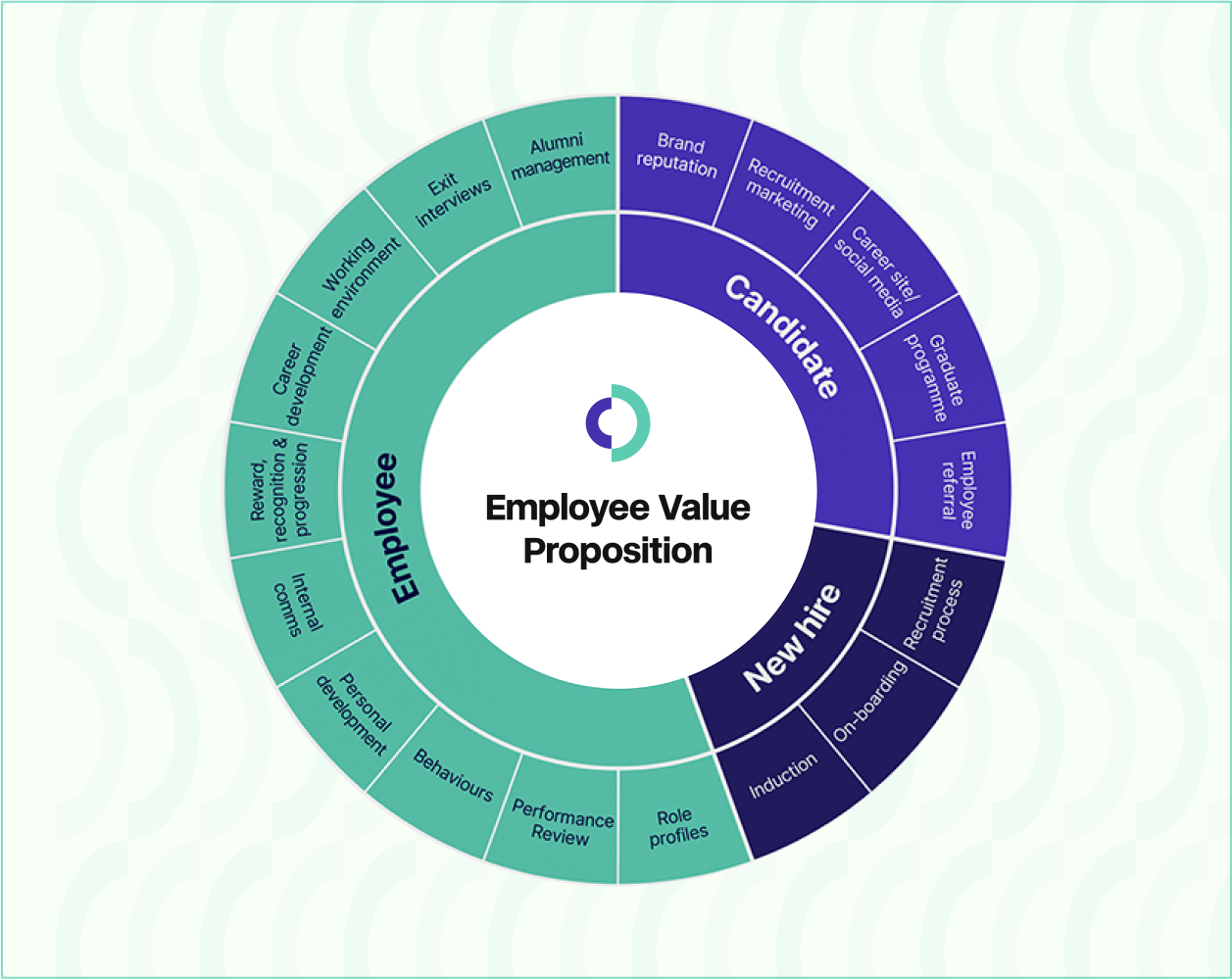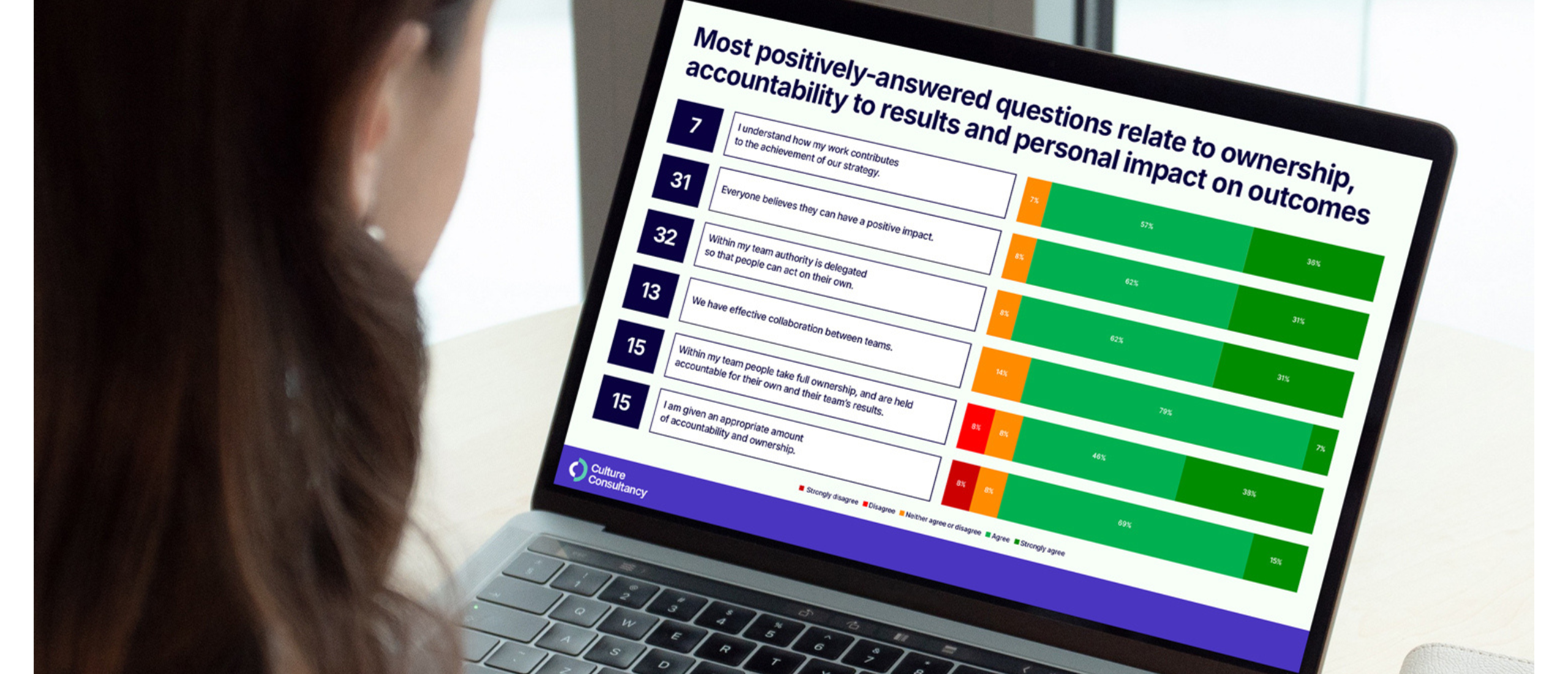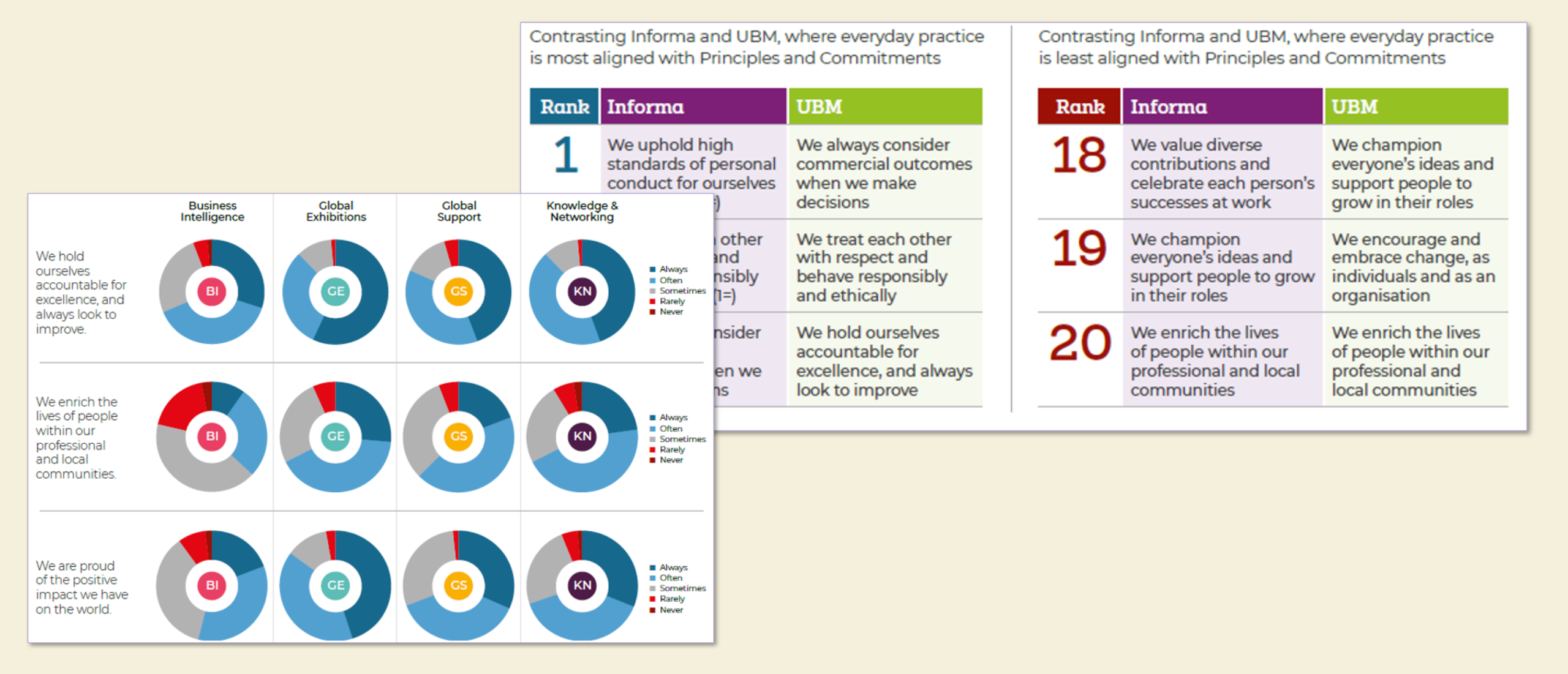
case study - informa
Informa operates events and exhibitions, delivers intelligence-based products and data-driven services, convenes communities in person and digitally and provides access to cutting-edge academic research for specialist communities worldwide.
Already a highly successful industry player, the company at the beginning of 2018 had entered the FTSE-50 with its £4bn acquisition of major competitor UBM plc.
more likely to recommend MAB as a place to work
improvement to communication (internal NPS)
of employees feel they fully understand the Mission, Vision and DNA
at the Business Culture Leadership Award
The priority was now to bring together the two businesses and develop the commercial B2B offering, and in doing so align and engage their 11k employees globally.
The executive management team primary focus was to combine the two businesses and fulfil the financial and other promises made at the time of the UBM acquisition. These included scale benefits, over £60m of cost synergies together with revenue synergies, ROIC by the third year, and attractive EPS accretion from 2019.
As part of this combination, they wanted to set out one company purpose for the combined organisation, to reflect the histories and success of both cultures. They also wanted to articulate the ways of working, or values, that will drive sustainable commercial and organisational outcomes aligned with that agreed purpose.


At this time of change, Informa was keen to harness the best from the legacy UBM business and its own operation. This included the culture assets as well as the tangible assets such as capital and technology. In line with the strategy for the combination of the two companies, Informa asked Culture Consultancy to:
The desire to bring together the best of both organisations prompted Culture Consultancy to explore the cultures separately within the two brands. Similarly, the group operates across geographies and industries – diversity is an asset in harnessing specialist expertise – and so we also were careful to examine practice within the various divisions of the B2B businesses.

As part of our Insight stage – understanding the status quo of day-to-day practice and behaviours – we ran an assessment of culture across the two organisations, gathering data from four sources:
We analysed these various insights on culture in two reports for executive management.
In the first we made recommendations for 10 strategic imperatives that would enable the executive team to position the combined organisation for sustainable growth as well as enable the benefit realisation of the transaction.
The second account presented recommendations consistent with the narrative that emerged from the Intranet survey. This custom-built diagnostic was based on the companies’ own principles and commitments (or values). It yielded some 14,000 free-text comments along with quantitative data on work practices and what colleagues valued most.
Once we had gathered and explored these insights, conclusions and recommendations we facilitated the Design stage, setting out the foundations of the brand purpose / mission and values for the combined business.
We facilitated workshops for the various divisions of Informa and UBM. In advance of each, participants – senior managers – were asked to consider questions that reflected the heart of the company’s mission or purpose, and others to prompt thinking about desirable values.
The workshops yielded many ideas for both the purpose and values. We consolidated these into the emerging themes, capturing the essence of each concept alongside the original language for participants. We also made observations and recommendations, informed by our previous work in understanding culture and practice across the business.
This design work then informed copywriting processes to set out new names for the divisions of Informa, a refreshed brand purpose and also the values or guiding principles for shaping every day work practices.
Leaders were upskilled and supported through mentoring, and cultural metrics were introduced to track progress.
The New Informa Constitution has been launched and articulates the New Informa:
This will now be used to align work practices across the 11k employees as the combination of the two businesses progresses.


I was impressed with their determination and their methods of how they could actually get the work that they did during research to flow into workstreams that we could implement in the business to actually make sure that we lived and experienced the purpose and the values that we unearthed. So many of these agencies will get you to the purpose, will get you to the articulation of the brand platform, but not many actually show you methods and processes which will allow you to embed it into the business and that was key for us. The way the project was run was fantastic. They pushed us, and we needed it, and they’ve really helped us to get our arms around the business.
Director of Global Branding, Informa
Making
Complexity
Simple.